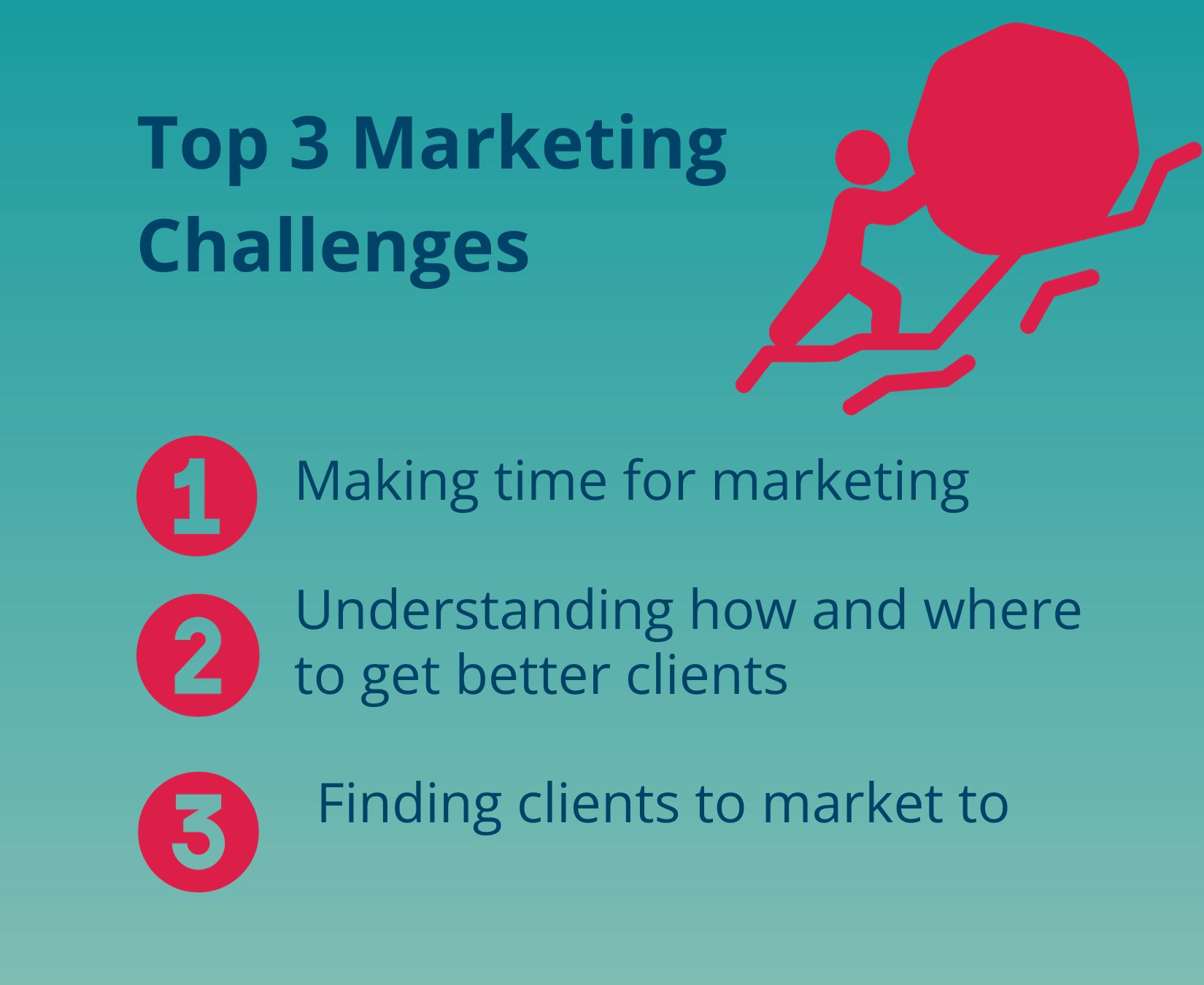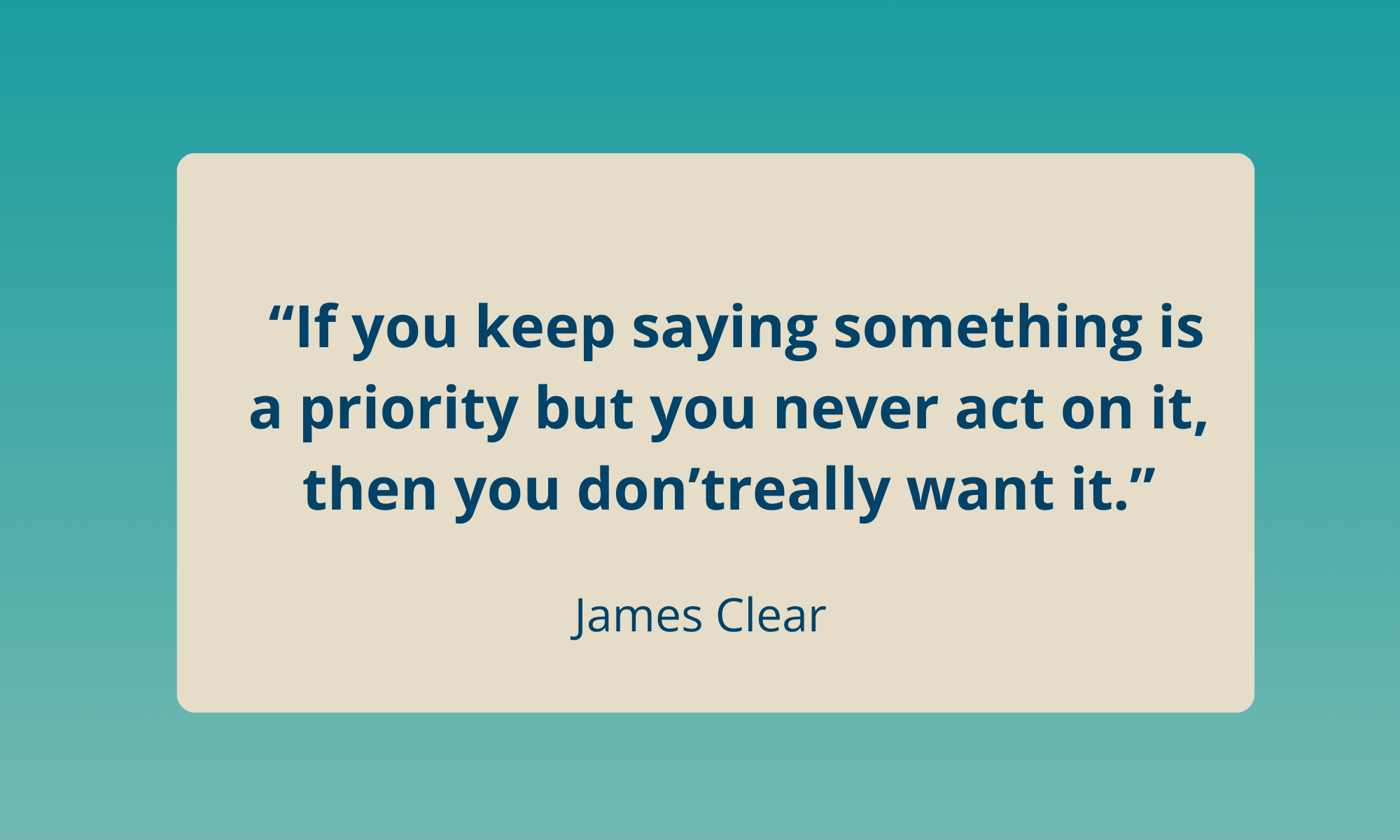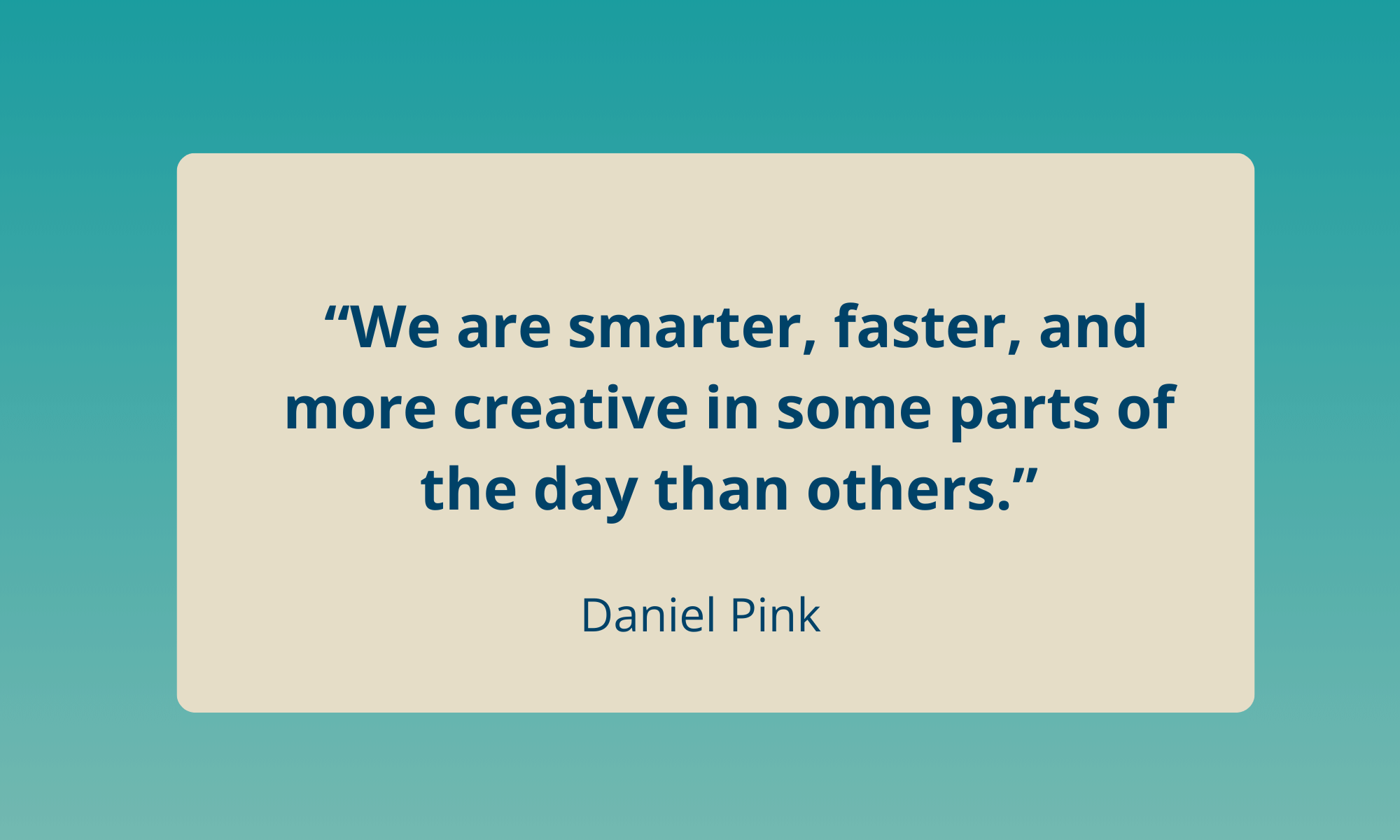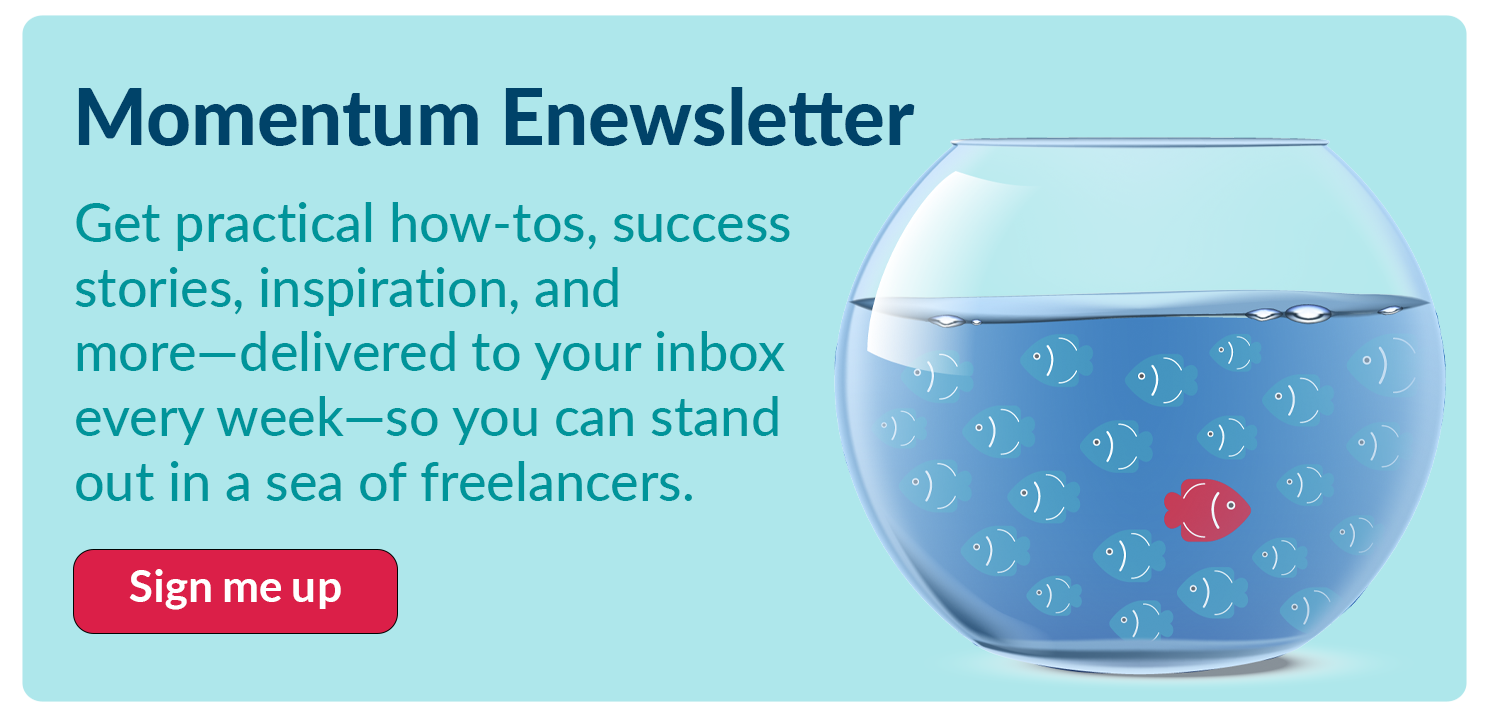The Habit that Will Make You a Freelance Success
Habits make it easier for us to do the things we need to do—like marketing your freelance business. If you build the marketing habit, then marketing can become as easy as tying your shoes.
When you were little, you learned how to tie your shoelaces. In the beginning, you had to really think about what you were doing. And it was hard. But the more times you tied your shoelaces, the easier it got—because tying your shoelaces became a habit.
As a freelancer, there’s one habit you need to build: marketing.
Here’s why.
Being smart and talented isn’t enough to get the high-paying freelance jobs and clients you deserve. If you don’t market your freelance business–and do good marketing–you’ll struggle to succeed.
Why It’s Hard to Build a New Habit
But building new habits is really hard.
We’re all creatures of habit, and the habits we already have are wired in our brains.
Also, we’re wired to do things that give us an immediate reward. But seeing results from the marketing habit takes time.
With the right habit-building strategies, you can build a marketing habit that sticks. You can build a marketing habit that will help you succeed.
Why It’s Really Hard to Build the Marketing Habit
93% of freelancers find marketing to be a challenge, according to How Freelancers Market their Services (2023). 55% of these freelancers said that marketing was the “Biggest challenge” or “One of the major challenges.”

Here’s what some freelancers have said about marketing:
“I don’t know where to start.”
“I don’t know how to do the marketing. No training or experience.”
“I don’t know where to put my energy.”
“It’s too hard.”
“I don’t want to be pushy.”
“I feel like marketing is bragging.”
“I don’t like to sell myself.”
Sound familiar?
Most freelancers never have a chance to learn about marketing. So it makes sense that marketing would be a big challenge.
But freelancing is a business—and all businesses need marketing. Learning what to do to market your freelance business is actually the easy part. At the end of this post, I’ll tell you what more about this and give you some tools to help you build your marketing habit.
You’ll have to overcome the stuff in your mind about not wanting to “sell yourself,” be pushy, etc.
What Not Having Time for Marketing Really Means
Lots of freelancers tell me that they don’t have time for marketing.
If you believe this, then finding time for marketing is beyond your control. And if something is beyond your control, there’s no point in trying to do anything. Right?
Wrong!
When freelancers say, “I don’t have time to work on my marketing,” they really mean, “Working on marketing isn’t a big enough priority for me.”

James Clear is the best-selling author of Atomic Habits: An Easy & Proven Way to Build Good Habits & Break Bad Ones. Good Morning America called Clear the “world’s leading expert on habit formation.”
Clear also says that “Your actions reveal how badly you want something,” and that if you want the rewards, you need to sacrifice your energy. This means that you need to work to get what you want.
Marketing Becomes Easier When You Do it More
A habit is “the small decisions you make and actions you perform every day,” says Clear.
How long it will take you to make the right marketing decisions and take the right marketing actions depends.
You may have heard that it takes about 66 days to form a new habit. This is the average that health psychology researcher Phillippa Lally found in her studies. The range for forming a new habit was 18 to 254 days.
But habits form based on frequency, not time, says Clear.
Practicing any new habit rewires your brain. When you make marketing decisions and take marketing actions regularly, marketing becomes easier for you.
How to Build Habits that Stick
Here are some simple ways to build the marketing habit, based on the work of Clear, bestselling author Daniel H. Pink, and me.
Create an implementation intention
If you’re going to practice the marketing habit regularly, then you need a plan to help you do this.
Researchers call this an implementation intention. Here’s the formula:
I will [BEHAVIOR] at [TIME] in [LOCATION].
Hundreds of studies have shown that implementation intentions help people stick to their goals.
Here’s an example of an implementation intention to build the marketing habit:
I will WORK ON MY MARKETING at 1 PM ON FRIDAY in MY OFFICE.
For freelancers, the location isn’t usually important. But it could be helpful sometimes. So I left it in.
Stack your habits
Another type of implementation intention is called habit stacking. After you do something that you already do regularly (a current habit), you practice the new habit. Here’s the formula:
After [CURRENT HABIT] I will [NEW HABIT]
Clear says that habit stacking “allows you to create a set of simple rules that guild your future behavior.”
Here’s an example of habit stacking to build the marketing habit:
After I check my email, I will go on LinkedIn and look for posts to comment on.
Choose the Right Time of Day
Clear and Pink, bestselling author of When? The Scientific Secrets of Perfect Timing, both say that when you practice a new habit makes a big difference.
“One of the secrets to sticking with a habit is asking yourself to act at the right time,” says Clear.
It’s easiest to build new habits when you have the energy to do them, and your energy levels largely depend on the time of day.

Pink also says that the difference between our best and worst part of the day can be huge. And at certain times of day, we’re better at some things than others.
The science of the day
Pink calls this the science of the day. He divides the day into three parts:
- Peak:
- Best focus
- Morning and (best) last morning
- Trough:
- Less energy and alertness
- Afternoon
- Rebound:
- Most creative
- Late afternoon and early evening
The peak, trough, and rebound occur in this order for most people. Night owls tend to rebound, trough, and peak.
So we’re most focused in the late morning and most creative in the late afternoon and early evening.
Here’s how to use the science of the day to practice the marketing habit:
- The peak is the best time to work on things like developing your marketing strategy.
- Late afternoon and early evening is the best time to work on more creative parts of marketing like writing your LinkedIn profile and website content and drafting direct emails.
- The afternoon trough, which Pink calls “the Bermuda Triangle of our days, where “our effectiveness and good intentions disappear,” is a good time for easier work like developing your prospect list or searching for relevant contacts to invite to be part of your network on LinkedIn.
Figure out the science of your day and use it to build the marketing habit.
5-Step Process to Build the Marketing Habit

Here’s Clear’s 5-step process for building new habits.
1. Start with an incredibly small habit.
Scale the habit down to something that takes 2 minutes or less to do, says Clear. This is less practical for building the marketing habit then for, say, getting more exercise.
You could spend 2 minutes inviting one person to connect with you on LinkedIn or commenting on other people’s posts.
But most marketing actions take longer than 2 minutes. There are things though, that you can do in about 10 or 15 minutes. This will help you “master the art of showing up,” as Clear says.
2. Increase your habit in very small ways.
Get 1% better each time you work on your marketing. Tiny improvements add up. And as you get a little better every week, you’ll be motivated to keep going.
Here’s what this looks like using LinkedIn as an example:
- Week 1: Invite 1 person to connect with you and spend 2 minutes commenting on posts every day
- Week 2: Invite 2 people to connect with you and spend 5 minutes commenting on posts every day.
3. As you build habits, break them into chunks.
Make your actions to practice marketing just right, neither too hard nor too easy. Clear calls this the Goldilocks rule.
You do this by breaking marketing down into manageable chunks. Continuing with the LinkedIn example:
- Day 1: Invite 1 person to connect with you and spend 2 minutes commenting on posts
- Day 2: Start revising or drafting your profile. Figure out the right keywords.
- Day 3: Continue revising or drafting your profile. Draft your About section.
- Day 4: Continue revising or drafting your profile. Review and refine your About section.
- Day 5: Finalize your About section. Start drafting your headline.
- Day 6: Finalize your headline.
- Day 7: Work on your Experience section.
- Day 8: Work on the rest of your profile.
4. When you slip, get back on track.
We all slip and get off track. Be kind to yourself and accept that you’re human. Then get back to practicing your marketing.
5. Be patient. Stick to a pace you can sustain.
We’re wired for immediate gratification and quick results. But it takes time and practice for to build the marketing habit and see the results. You have to keep going.
“It’s not the last sentence that finishes the novel. It’s all the ones that came before,” says Clear.
Reward Yourself
Also, our brains are wired to crave reward. So as you practice the marketing habit, reward yourself. Clear calls this habit stacking + temptation bundling. Here’s the formula:
-
- After [CURRENT HABIT] I will [NEW HABIT].
- After [NEW HABIT], I will [HABIT I WANT].
Here’s an example of habit stacking + temptation bundling for marketing:
-
- After I HAVE LUNCH ON FRIDAYS, I will WORK ON MY MARKETING.
- After I WORK ON MY MARKETING, I will HAVE A GLASS OF WINE.
Wine is a nice reward for me. But you can use any type of reward that you like.
Yes, You Can Build the Freelance Marketing Habit!
When you were little, you learned to tie you shoes and made this a habit.
Likewise, to become a freelancer, you had to practice writing, editing, or whatever your field is until it became a habit and you became an expert.
Marketing is just another habit. You need the marketing habit to succeed as a freelancer. And you CAN build the marketing habit.

Learn More About Building a Marketing Habit that Sticks
Content from The Mighty Marketer
How Freelancers Market their Services (2023)
How to Supercharge Your LinkedIn Profile, with Free Checklist
How to Make your Web Content Awesome, with Free Checklist
Why You Need to Use Direct Email: What 4 Freelancers Say
Free guide:
The Ultimate Guide to the Freelance Success You Deserve
Other Content
James Clear (FREE) The Habits Guide: How to Build Good Habits and Break Bad Ones
James Clear, Atomic Habits: An Easy & Proven Way to Build Good Habits & Break Bad Ones
Daniel H. Pink, When? The Scientific Secrets of Perfect Timing
